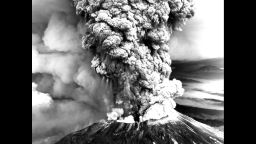In the past eight weeks, more than 130 small earthquakes have trembled beneath the surface of Mount St. Helens.
At this point, “there is absolutely no sign that it will erupt anytime soon, but the data we collect tells us that the volcano is still very much alive,” the U.S. Geological Survey said.
Seismologists reported that there are no anomalous gases, and no signs that the collection of magma, which is the molten rock beneath the surface of the Earth, is getting inflated in the recent swarm of earthquakes at the volcano.
Although there are no signs of an imminent eruption, the volcano is recharging, scientists say.
Mount St. Helens is in Washington state, 95 miles south of Seattle and about 55 miles northeast of Portland, OR.
The earthquakes have been measured at a magnitude of 0.5 or less and the largest was at 1.3. They’ve been measured about 1.2 to four miles underneath the surface. With such small magnitudes and such depths, you wouldn’t be able to feel the earthquakes on the surface.
But it’s not the magnitude that has gotten scientists attention – it’s the frequency.
They’ve become increasingly common since March 14, “reaching nearly 40 located earthquakes per week,” according to the USGS.

The USGS says the volcano’s collection of magma is re-pressurizing. The process can continue for years without an eruption. Scientists have seen similar patterns of small earthquake swarms in 2013, 2014 and in the 1990s, according to the USGS.
Mount St. Helens erupted on May 18, 1980, blowing off more than 1,000 feet from the top of the mountain, leaving a huge crater and spewing hot ash across the Northwest. It killed 57 people, ignited forest fires from the scattering of hot ash and caused floods as the snow melted from mountain tops.
Since then, Mount St. Helens is one of the closely monitored volcanoes on the planet.
CNN’s Dave Alsup contributed to this report.


















